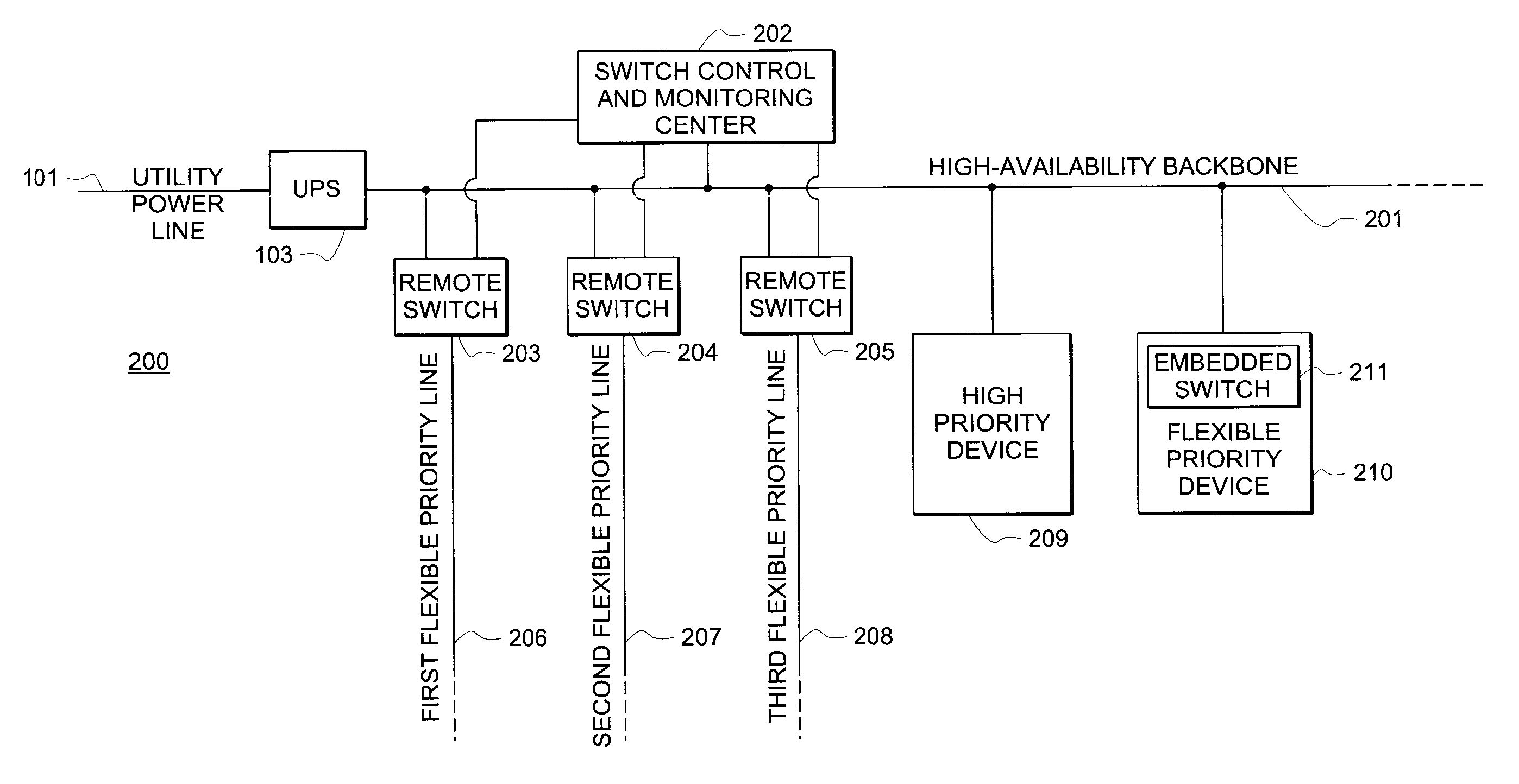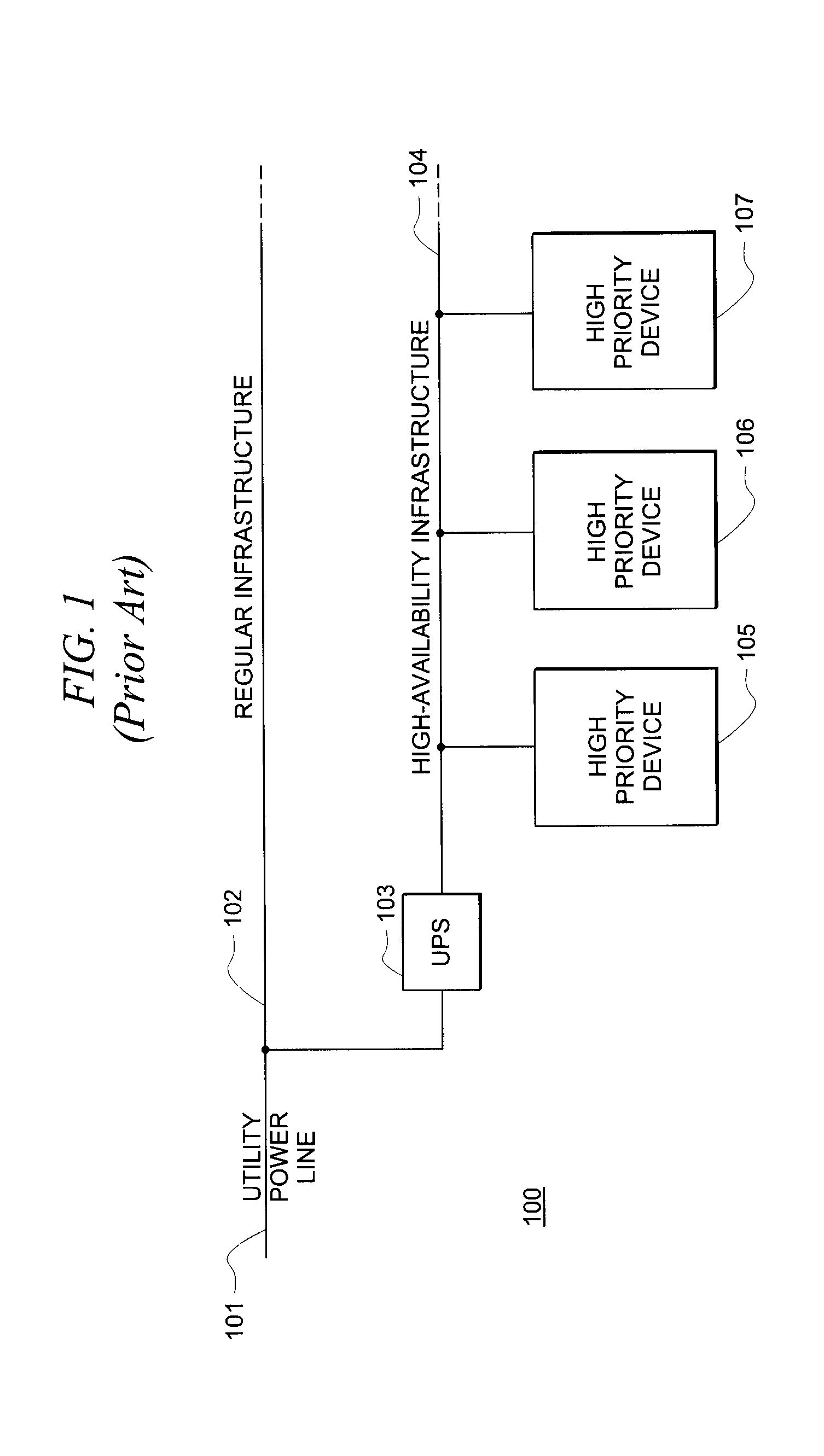Systems and methods for providing and managing high-availability power infrastructures with flexible load prioritization
a technology of high-availability power infrastructure and load prioritization, applied in emergency power supply arrangements, data switching networks, instruments, etc., can solve problems such as burdening the electric power industry, and affecting the reliability of high-scale generation and transmission systems
- Summary
- Abstract
- Description
- Claims
- Application Information
AI Technical Summary
Benefits of technology
Problems solved by technology
Method used
Image
Examples
Embodiment Construction
[0020]FIG. 2 shows a block diagram of system 200 for providing and managing a high-availability power infrastructure with flexible load prioritization according to an exemplary embodiment of the present invention. Utility power line 101 provides power to UPS 103. As such, UPS 103 receives “regular” power from utility power line 101 and provides a reliable, high-availability power source via high-availability backbone line 201. In alternative embodiments, any power source (e.g., a DG unit) may be used instead of, or in addition to, UPS 103. A plurality of flexible-priority branches or lines 206-208 are connected to backbone line 201 via remotely controllable switches 203-205. Switch control and monitoring center 202 is connected to each of switches 203-205, either by direct wiring, wirelessly, or by signals communicated via the power grid. Furthermore, switch control and monitoring center 202 may receive power necessary for its own operation from backbone line 201.
[0021] In one exem...
PUM
 Login to View More
Login to View More Abstract
Description
Claims
Application Information
 Login to View More
Login to View More - R&D
- Intellectual Property
- Life Sciences
- Materials
- Tech Scout
- Unparalleled Data Quality
- Higher Quality Content
- 60% Fewer Hallucinations
Browse by: Latest US Patents, China's latest patents, Technical Efficacy Thesaurus, Application Domain, Technology Topic, Popular Technical Reports.
© 2025 PatSnap. All rights reserved.Legal|Privacy policy|Modern Slavery Act Transparency Statement|Sitemap|About US| Contact US: help@patsnap.com



